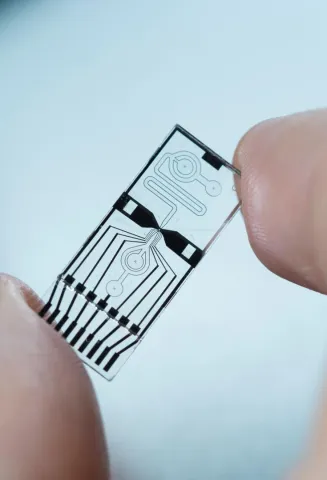
At certain times of year, naturally occurring marine algae can proliferate and pose a threat to human health from the production of potent bio-toxins. These “Harmful Algal Blooms” (HABs) are particularly damaging when algal bio-toxins become concentrated in the bodies of filter feeding bi-valve shellfish, posing a risk to human health when consumed.
The current, statutory method for the monitoring of HABs involves the delivery of water samples to a centralised lab and analysis for certain algal species by microscopy. Despite being expensive, this incurs a severe time delay between the detection of a HAB event and the enation of the necessary intervention such as a delay or acceleration in shellfish harvest.
The aim of this project is to improve early warning and event forecasting of harmful algal blooms within and around shellfisheries by developing existing, state of the art, lab-on-chip technology into a new, portable tool that will enable end-users (i.e., shellfish producers, and statutory monitoring authorities) to undertake HAB surveillance in the field. This technology takes the form of a micro-cytometer, a device that measures the properties of cells as they pass through a narrow channel.
While conventional cytometers only measure the optical properties of cells, our system (CYTOCHIP) measures multiple optical and electrical properties simultaneously, providing excellent discrimination of cell types and differentiation of toxin-producing and non-toxic species. These capabilities are being exploited to help shellfish producers and authorities to protect consumers and public health, and reduce the costs associated with the existing, delayed analysis methods.
Barat, D., Spencer, D., Benazzi, G., Mowlem, M.C., Morgan, H. (2012) Simultaneous High Speed Optical and Impedance Analysis of Single Particles with a Microfluidic Cytometer. Lab on a Chip , 12(1), 118–126. https://doi.org/10.1039/c1lc20785g.
Benazzi, G., Holmes, D., Sun, T., Mowlem, M.C., Morgan, H. (2007) Discrimination and Analysis of Phytoplankton Using a Microfluidic Cytometer. IET Nanobiotechnology, 1(6), 94–101. https://doi.org/10.1049/iet-nbt:20070020